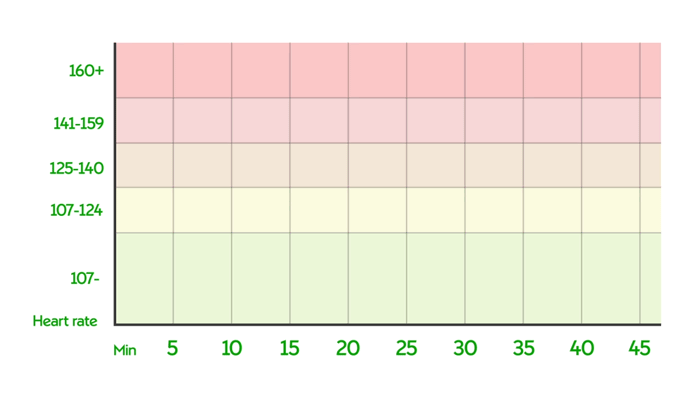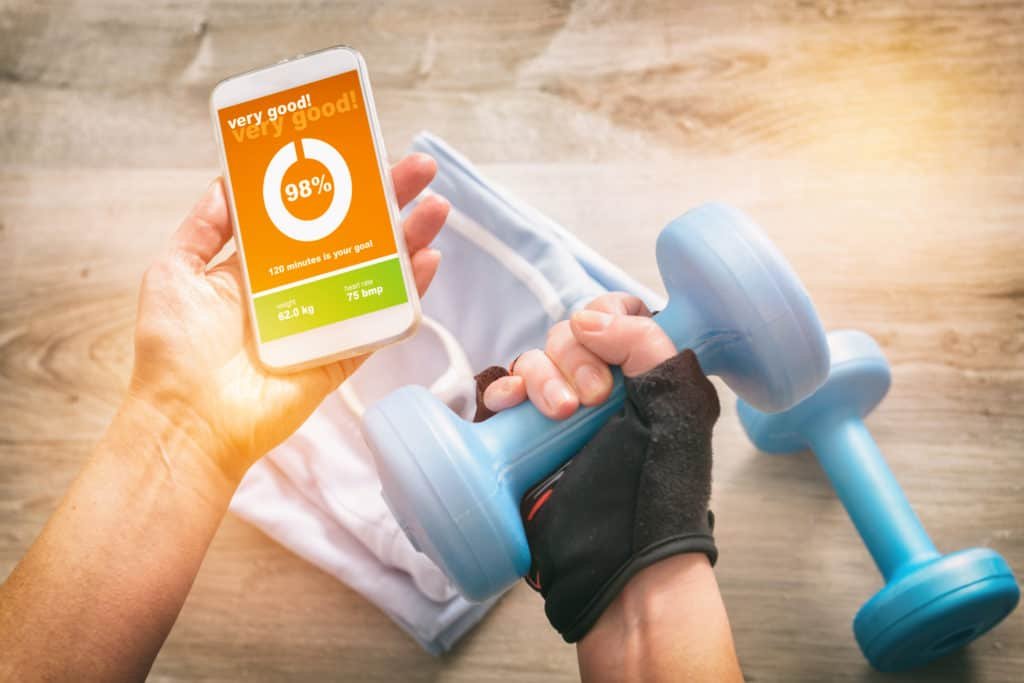
Table of Contents
Are you trying to burn fat? What is the best heart rate to burn fat? You need to be aware of this if you hope to achieve your weight loss goals. You need to have a good idea about how fast your heart rate is before, during, and after a workout. By staying within the range of your calculated heart rate, you will be able to burn a lot of fat. An individual’s heart rate to burn fat is also known as the fat burning zone.
It has been suggested that exercising within your fat burning zone leads to the use of much more calories than in other zones. No matter the state of your cardiovascular health, you will be within your fat burning zone if your heart rate is between 55 percent and 70 percent of the highest heart rate.
What Is The Heart Rate To Burn Fat’?
The heart rate refers to the number of times the heart beats in a minute. It is typically measured in terms of beats per minute. Cardio exercises have been suggested to be able to burn much more fat but only if they are done the same heart rate.
When exercise at very high heart rates, you are able to burn more calories than fat. That is the reason you should pay attention to the perfect heart rate to burn fat.
Fat Burning Zone
As previously mentioned, The fat burning zone is the level of intensity in a cardiovascular exercise that maximizes caloric expenditure using the highest possible percentage of calories from fat. This is a heart rate range, of which about 50-60% of the maximum heart rate is said to occur. But this margin is not a criterion that is accepted equally, and there are those who claim that the fat burning area is presented in a different percentage value.
In all cases, people have different individual heart rates at which they will burn the highest percentage of calories from fat during exercise. While views and opinions are likely to differ, the key issue to consider is that the fat burning zone occurs during less intense exercise
Best Heart Rate to Burn Fat

Do you understand how your body expends energy during a workout? As you exercise, your body will get its energy from two major sources: glycogen or fat. Glycogen is stored in the liver and muscles in the form of carbohydrates.
The heart rate to burn fat exists when the exercise is not that intense. This is when you can expect more fat than glycogen to burn. When your heart rate is at 60 percent of the maximum, you burn 60 percent fat compared to 40 percent glycogen.
At 75 percent of the maximum heart rate, only 35 percent of fat is burned compared to 65 percent of glycogen. As the intensity of your workout routines increase, the amount of fat you burn decreases while the amount of glycogen increases.
The most effective heart rate to burn fat is, therefore, 65 percent of the maximum heart rate. That is because more than 50 percent of the energy used comes from fat. With that, you are able to burn more fat than glycogen.
How to Calculate Fat Burning Heart Rate

To determine the heart rate to burn fat, you have to take into account your maximum heart rate (MHR). The maximum heart rate is the likely heart rate for an individual when involved in highly intense exercises. Younger individuals usually have higher MHRs than their older counterparts.
You need to do a stress test to determine your MHR. For many people, however, that method is not very practical. That is why subtracting your age from 220 will give you an estimate of your MHR. If you are 50 years old, your MHR will be 170.
Bear in mind that this is only an estimate with the actual MHR being slightly lower or higher than this. You will get your heart rate to burn fat as a percentage of the MHR. You can calculate the target heart rate zone once you know your maximum heart rate. The target heart rate zone is the level at which your heart is being exercised and conditioned without overexerting yourself.
The Centers for Disease Control and Prevention (CDC) and the American Heart Association advise an overall target heart rate of:
Moderate exercise intensity: 50-70 percent of your maximum heart rate
Strenuous exercise intensity: 70-85 percent of your maximum heart rate
If your target heart rate to burn fat is between 55 and 70 percent and you have a 170 MHR, then your lower and upper threshold stands at 93.5 and 119 heartbeats per minute, respectively. Your fat burning zone would, therefore, stand between 93.5 and 119 beats per minute.
The heart rate can typically be measured in several ways including the following:
•Wearing a heart rate monitor, which typically features a watch and chest strap. This is one of the best ways of measuring your heart rate. The watch makes it possible for you to input your target range of heart rate. When you get below or above the set levels, the watch will beep to alert you.
•Cardiovascular equipment which has handles that monitor the heart rate when you hold your hand on it.
•Monitoring the heart rate manually by placing your hand on the neck or wrist. You only need to place the third and second finger on the carotid or radial pulse to count the number of beats every 10 seconds. When you multiply that by 6, you will be able to arrive at your heart rate.
Ideal Heart Rate for Weight Loss
Did you know that working out at the ideal heart rate to burn fat doesn’t necessarily lead to weight loss? During a less intense workout, you tend to burn more fat than calories. It is, however, at the intense levels of between 70 and 90 percent that you will be able to use more calories overall.
Weight loss is more related to the number of overall calories you lose and not just the fat you burn. It, therefore, turns out that doing low intense workouts may not be very effective when it comes to losing weight.
Of course, low-intensity exercise is also very important. It is important that you incorporate endurance exercises into your fitness program and alternate them with short high-intensity workouts, also known as Interval Training(HIIT). With that, you will be able to burn fat and build endurance at the same time.
Conclusion
The first step in maintaining your fat zone is calculating it. You can then adjust the intensity of the workouts so that you are always within the lower and upper limits. From time to time, you can check your heart rate using your preferred method.
However, to effectively lose weight, you need to vary the intensity of your workouts. For five cardio workouts, you may want to alternate between low-intensity and high-intensity exercises. Make sure you get a heart rate monitor to be able to better perform your exercises. You will be able to have a better understanding of your workout threshold and, therefore, lose more weight.






